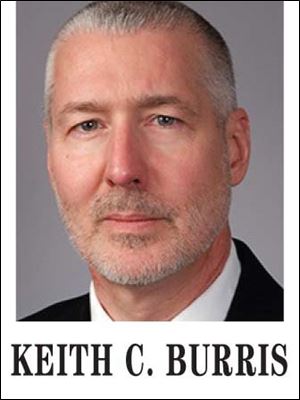
COMMENTARY
Preserving and protecting the community
3/23/2014
In the little Ohio town where my wife and I grew up, they are tearing down schools.
After all, the state will pay for new ones.
In that little town, they are tearing down Lincoln School, which was the best elementary school in town and where a wonderful lady named Mrs. Leach taught kindergarten for four generations; South Lawn School, which served the poorer folks in town; and Central, which was two buildings, older and newer, high school and junior high.
The old neighborhood schools are coming down in favor of a big, centralized modern building in which all the town schools will be united. It looks like a prison.
The town is replacing vital public assets with big holes in the ground. Great old buildings that were the anchors of their neighborhoods are shuttered or demolished.
Same as in Toledo. Good-bye Libbey High School, which should never have been abandoned and many in Toledo think should have been preserved like Scott High School. Good-bye Macomber, which we'd like to have back now.
I am angry about the shortsightedness in that old Ohio town. My grandfather and my father gave a lot to the community, and it seems to me the municipality is committing suicide.
I don’t want to see it happen here.
I hate to see a town, or a city, fail to protect its heritage.
In fairness, the recession that has come to Appalachia over the past 30 years has been a devastation, just as the recession that has come to the industrial and rust belt cities has been a devastation.
The other sad thing is that, in hard times, economic predators descend — buying up precious assets for pennies on the dollar.
The cocktail for a community destroying itself is: economic desperation, public indifference, and poor political leadership.
The good news, in Toledo, is that the public is not indifferent to its architectural heritage or its neighborhoods. Far from it. (I don’t think I have gotten more reader mail on anything than saving the Spitzer Building.) And our political and community leaders are generally preservationist. The Land Bank is a great organization and is truly trying to save our noble old buildings.
But Toledo has so many architectural assets — so many great old structures — that it has been hard to set priorities.
Now we are faced with the possible obliteration of several architectural gems. In many ways, the Spitzer, the Nicholas building, the Nasby, and the Pythian Castle hold the key to future downtown development.
A few days ago, I toured the Spitzer. It is a jewel and the priority save right now. The city must use carrots and sticks to make sure its owner behaves differently than he has up to now. The mayor and his development director must stay on this.
I also toured the Jefferson. It has a magnificent roof and facade. What is its future? And how do we keep it intact until that future arrives?
We need leadership here.
● We need a conversation involving not only civic leaders, but also architects, planners, the young who want to live downtown. Especially the young. They can revitalize the city if we let them.
● We need a comprehensive preservation plan. Better to mothball a gem for future use than to tear it down or let it slip away from us.
● We need to figure out where a trade school, community college presence, and UT presence downtown might go.
The ability to preserve the heritage of a community is a direct reflection of its collective intelligence and self-respect. Preservation is protection. Our past is who we still are.
Keith C. Burris is a columnist for The Blade.
Contact him at: kburris@theblade.com or 419-724-6266.